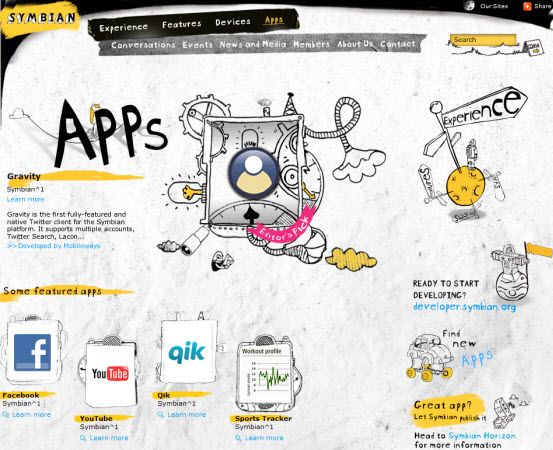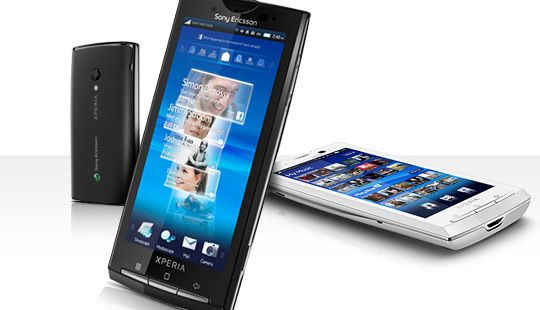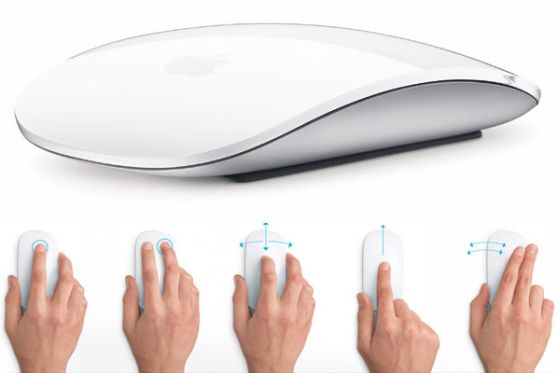Track the Time in an Eco-Friendly Way with Bedol Water-Powered Clock


Ever wonder how we got along without cell phones, BlackBerrys, notebook computers, and fax machines? How did our past generations manage to have fun without video games, MP3 players, and DVRs?
Come to think of it, how did we ever survive without the Internet?
I don't know how, but they did. And you know what? They don't remember ever thinking that they were missing something. They played records, wrote letters, used the phone book, and shopped at stores.
But then for us we got "GADGETS" for everything they make our lives very easier n entertaining....
Today GADGETS evolved n are ruling the technology in this technical world. ..


 Beauty is in the eyes of the beholder – that is true if you are seeing that person face to face. But if you are having a meeting or a conference online, probably somebody on the other face of the Earth, the real beauty is in the eyes of Hercules Dualpix HD720p. This new gadget from Hercules is an ultra mobile High Definition mini-webcam. The Dualpix HD720p is especially designed for laptops and other portable computer users that want to experience HD all the way. This device features the best specs you can hope for a High Definition webcam like:
Beauty is in the eyes of the beholder – that is true if you are seeing that person face to face. But if you are having a meeting or a conference online, probably somebody on the other face of the Earth, the real beauty is in the eyes of Hercules Dualpix HD720p. This new gadget from Hercules is an ultra mobile High Definition mini-webcam. The Dualpix HD720p is especially designed for laptops and other portable computer users that want to experience HD all the way. This device features the best specs you can hope for a High Definition webcam like: Looking for an unusual way of getting connected to your friends, loved ones, and your special someone in other parts of the world? Look no more because here is a cool gadget that will definitely do something that you’ve never seen before – flashing messages in mid air. That’s right! The iXP3 Internet Messaging Clock is not your ordinary clock because it does more than just telling the time – it actually gets you connected to other people across the globe by allowing you and your loved ones to send a whole new kind of instant messages to each other.
Looking for an unusual way of getting connected to your friends, loved ones, and your special someone in other parts of the world? Look no more because here is a cool gadget that will definitely do something that you’ve never seen before – flashing messages in mid air. That’s right! The iXP3 Internet Messaging Clock is not your ordinary clock because it does more than just telling the time – it actually gets you connected to other people across the globe by allowing you and your loved ones to send a whole new kind of instant messages to each other. Though the name litl, it can do big things. For one, its performance is seamless with what you want to do. For example, you want to watch all the pictures that you have shared throughout Flick or Shutterfly. All you have to do is switch to photos in the menu and there you have it all for you and everyone to view. Another is surfing the internet which this thing is designed to do. The operating system is optimized to render web pages in a snap and thinks ahead of things to do like if someone send you a link, instead of you clicking on the link, it automatically shows what it is! So if you want to send your grandma that new cookie recipe that you want to have, just send her a link and with her litl, all she has to do is to look at it and follow.
Though the name litl, it can do big things. For one, its performance is seamless with what you want to do. For example, you want to watch all the pictures that you have shared throughout Flick or Shutterfly. All you have to do is switch to photos in the menu and there you have it all for you and everyone to view. Another is surfing the internet which this thing is designed to do. The operating system is optimized to render web pages in a snap and thinks ahead of things to do like if someone send you a link, instead of you clicking on the link, it automatically shows what it is! So if you want to send your grandma that new cookie recipe that you want to have, just send her a link and with her litl, all she has to do is to look at it and follow. Yes, your little ones will sure love this cool gadget as it combines a digital camera, a video recorder, and a webcam in one! No need to buy three separate devices for them to capture wackiest photos, record silly moments, and show themselves in webcam for their grandpa or grandma to see. With the Tech Edge Digital Camera, they can all enjoy doing these without you worrying about your budget.
Yes, your little ones will sure love this cool gadget as it combines a digital camera, a video recorder, and a webcam in one! No need to buy three separate devices for them to capture wackiest photos, record silly moments, and show themselves in webcam for their grandpa or grandma to see. With the Tech Edge Digital Camera, they can all enjoy doing these without you worrying about your budget. 








 | |
| The colour is encoded with the message, and is used to illuminate an LED array on top of the recipient's similarly equipped light-messaging phone. | |
 | |
 Who can forget that utterly disgusting yet likable green ogre – SHREK! Now there’s an interesting MP3 player on the way (still in concept) which looks like Shrek. Pretty interesting actually.
Who can forget that utterly disgusting yet likable green ogre – SHREK! Now there’s an interesting MP3 player on the way (still in concept) which looks like Shrek. Pretty interesting actually.

 |  |  |
  |  | |

Apple product announcements are seldom without a thorough element to them. But I must confess that I do not remember the last time I saw a product accessory grab the headlines from the Macs themselves. Don’t get me wrong – I think the new iMacs are awesome and I just love the fact that the MacBook has been given lots more muscle. But well, my “oh wow!” moment was seeing the new Mighty Mouse (now known as the Magic Mouse), the world’s first multi-touch mouse. The improvements in the Macs had mainly to do with specs, the mouse (more…)

The Korg Electribe EMX-1 is designed as an all-in-one techno-production station, and contains a drum machine, and a synth/ sequencer enclosed within its solid metal casing. It has lots of knobs and buttons for the gadget fiend (20 knobs and 68 buttons), an info display, a Smartmedia card storage (ideal for saving off songs and using as a workpad) and two lovely valves (Valve Force Vacuum Tubes) set behind a little display glass...like you see in the museum. The valves make up a genuine analog circuit and are linked up to the Tube Gain knob that can be altered at your desire to make your sounds...warmer in a vintage sort of way.
Electribe EMX-1- MMT?
Multiple Modeling Technology is Korg's technology that creates sounds within the Electribe EMX-1. For the brainy buffs out there MMT offers 16 different types of synthesis, these range from powerful analog synthesis to a various number of digital synthesis to which Korgs of the past were built upon (like PCM and waveshaping). So now we have to play around with 207 PCM drum waveforms, 76 PCM waveforms and a whopping 64MB of song memory.
Outputs
The Electribe EMX-1 has a full MIDI spec, accessed via MIDI In, Out and Thru sockets, and audio is also bi-directional, with two main and two assignable individual audio outs, plus an audio input. Only mono audio (at mic or line level) can be accommodated. The machine can even be sync'ed to audio via this input
Electribe EMX-1- The Machine
The striking metallic-blue front panel is quite logically divided. You can easily pick out the synth section, effects, Part select and keyboard button area, and the row of 16 'keyboard' buttons, which also doubles up for a range of edit options, and mimics the black and white keys of a musical keyboard. The standard sequencer transport controls appear to lack fast forward and rewind options, but in fact they're located above the keyboard buttons, doubling as left/right select keys.
Each drum and synth voice is organised as a Part, an indivisible pairing of a voice generator and one track of sequencing played by the Pattern-based sequencer. Step sequencing is favoured (similar to the How to Make Your Own Beat Section), especially for drums, but don't worry, real-time recording with the Electribe EMX-1 is straightforward. Voice editing is very much a part of the writing process, since sounds and sequencing are so closely linked. Indeed, there are no separate voice memories: sounds are tailored for each Part during the composition process.
The synth/sequencer team is joined by three effects processors, a new and cool real-time arpeggiator, the ability to process external audio through the EMX's synthesis facilities and effects, and 'Motion Sequencing', the real-time recording of front-panel control tweaks, as featured on many other Korg products.
The top panel of the Electribe EMX-1 is divided into five or six principal sections. The first one to become acquainted with should be the main section, which houses the transport controls (record, playback and so forth), the mode keys (which determine whether the EMX-1 is in Pattern, Step Edit or Song mode), the ubiquitous bpm Tap key and the useful Mute and Solo buttons (to remove or single out respective parts within your pattern). By using the Auto BPM Scan key, you can easily detect the tempo of audio that is coming from the audio-in jack. The matrix menu that is sandwiched between the large rotary dial and the mode keys helps guide you through what parameters are available for the selected mode. You select the parameter by first pressing the mode key and then moving up or down the parameter list using the two small arrows to the left of the matrix menu.
The edit area is made of five separate subsections that include Effects, Part Common, Modulation, Synth Oscillator and Synth Filter. The 16 onboard effects are selected via the large knob and edited with the two rotary controls beneath it. The Edit Select button allows you to decide which effects processor is being edited at the moment. The FX Chain button is married to the two small red LED lights above it that indicate how the output of one effect is being input into another. All you have to do is repeatedly punch the button to determine the connection. There's also the Motion Seq button that records and plays back the movements of the two FX Edit controls.


